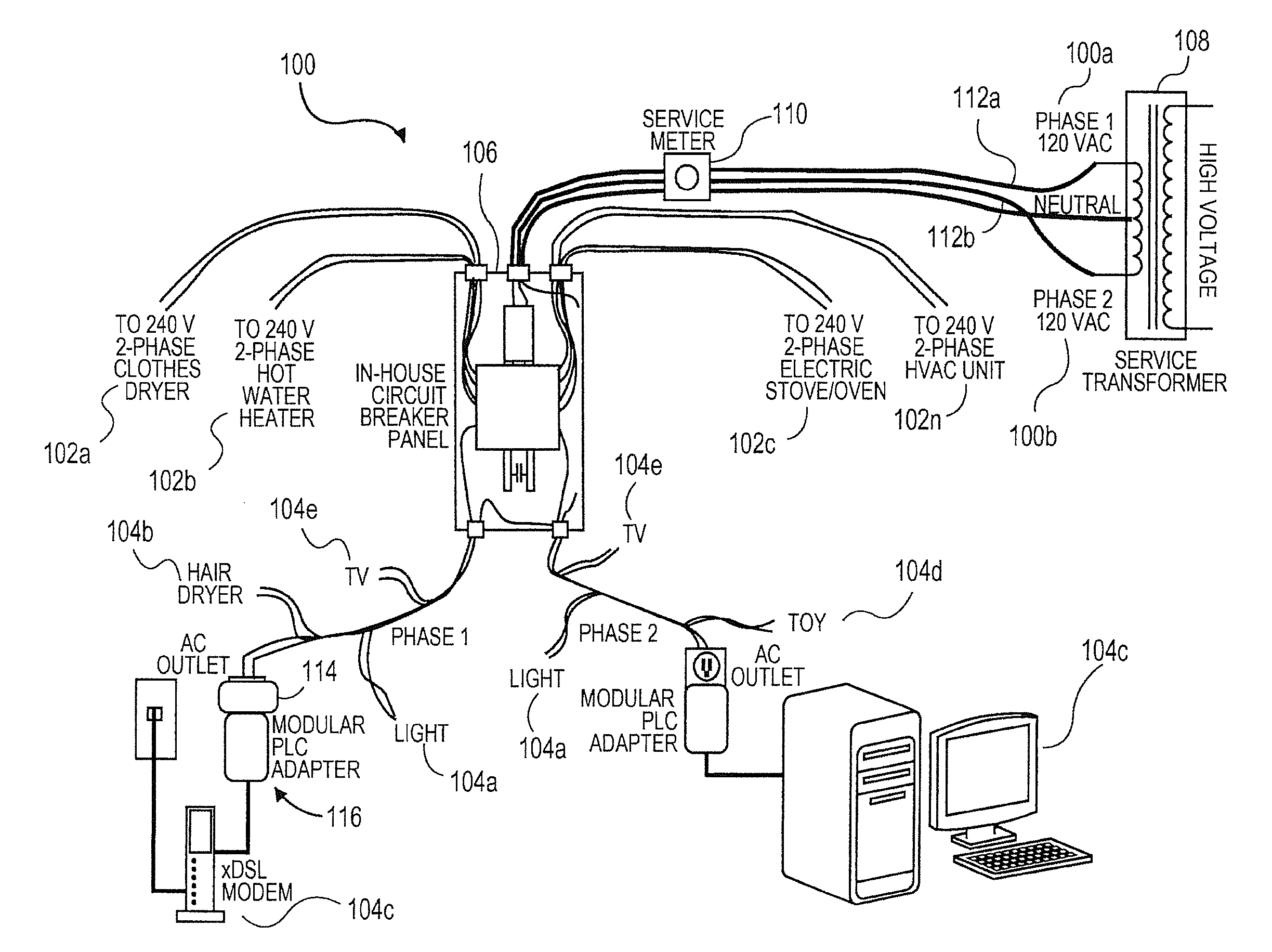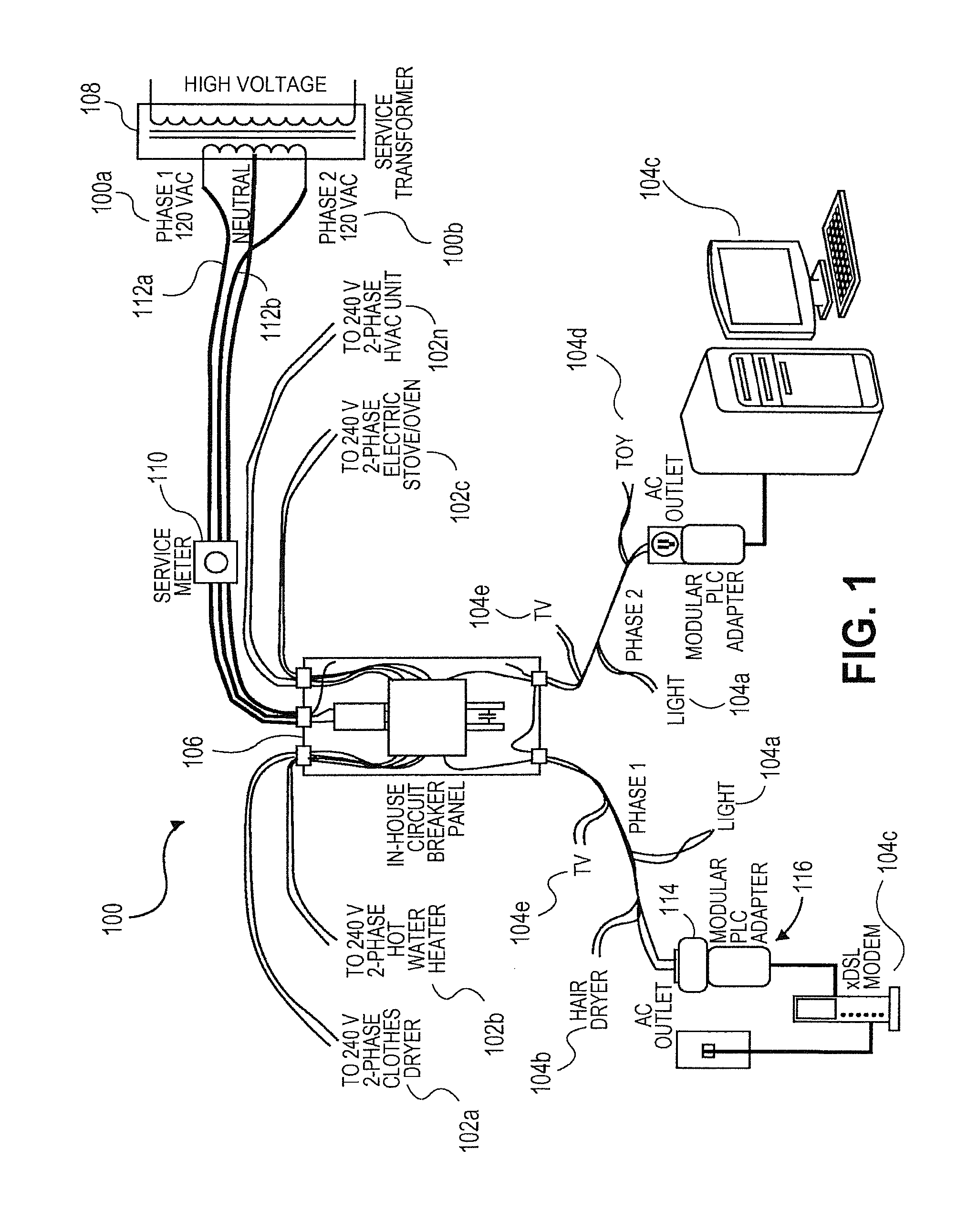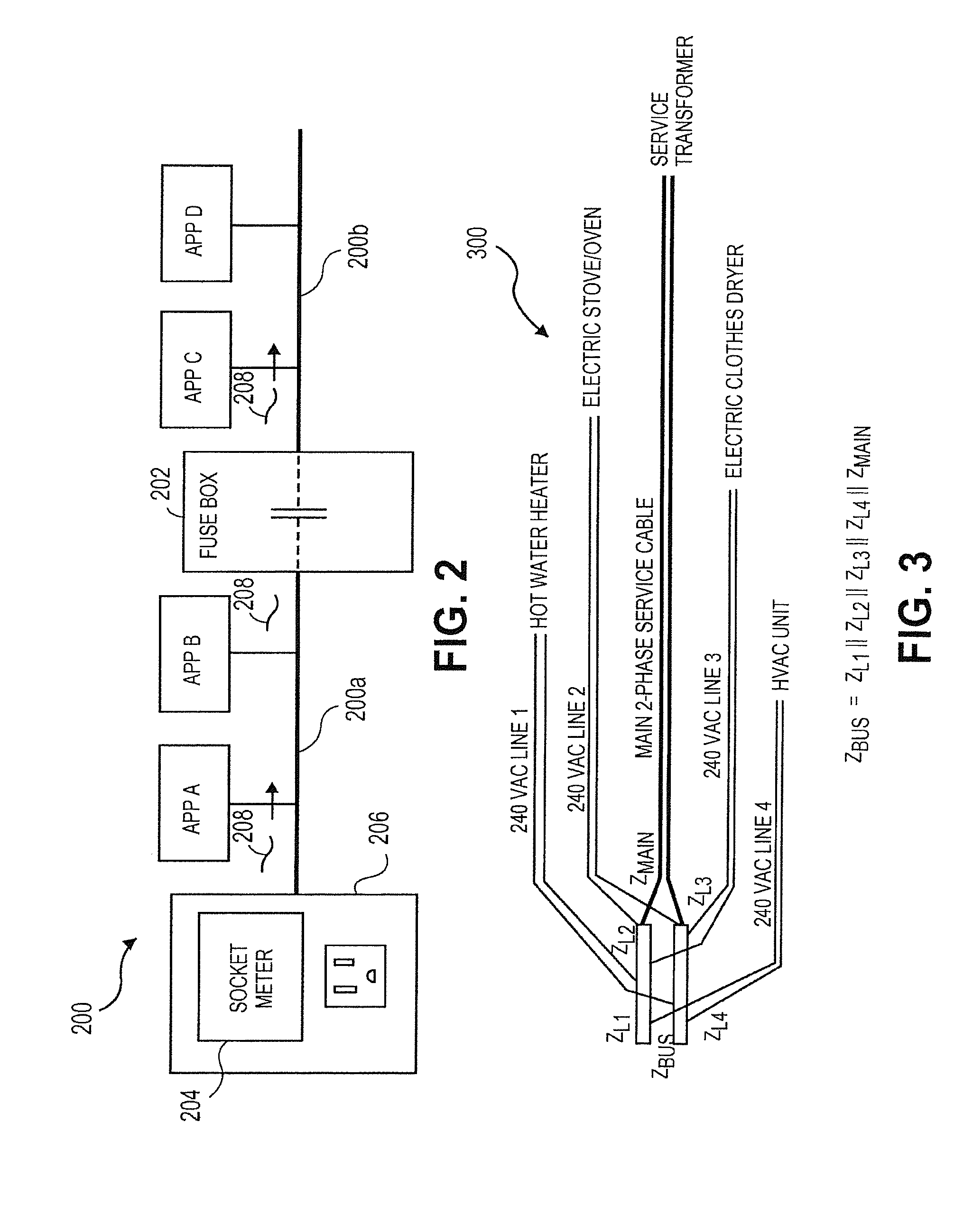System and method to measure and control power consumption in a residential or commercial building via a wall socket to ensure optimum energy usage therein
a technology for residential or commercial buildings and wall sockets, which is applied in the direction of liquid/fluent solid measurement, process and machine control, instruments, etc., can solve the problems of reducing the power factor, deteriorating the efficiency of the appliance, and reducing the efficiency of the appliance over time. , to achieve the effect of reducing the efficiency of the appliance, and easy measuring power usag
- Summary
- Abstract
- Description
- Claims
- Application Information
AI Technical Summary
Benefits of technology
Problems solved by technology
Method used
Image
Examples
Embodiment Construction
[0066]Reference will now be made in detail to the embodiments of the present inventive concept, examples of which are illustrated in the accompanying drawings, wherein like reference numerals refer to the like elements throughout. The embodiments are described below in order to explain the present inventive concept by referring to the figures.
[0067]Determining power usage of a residence, which includes commercial and residential premises, is desirable for a variety of reasons by a variety of parties. For example, consumers who pay for energy usage have a desire to track energy usage between bills to avoid surprise or “sticker shock” when receiving a power bill from an energy service provider. Consumers who want additional fire prevention services and / or emergency personnel (e.g., fire and police) may find the principles of the present inventive concept desirable. Consumers who desire to know if an appliance is becoming inefficient may also have an interest. In addition, service prov...
PUM
 Login to View More
Login to View More Abstract
Description
Claims
Application Information
 Login to View More
Login to View More - R&D
- Intellectual Property
- Life Sciences
- Materials
- Tech Scout
- Unparalleled Data Quality
- Higher Quality Content
- 60% Fewer Hallucinations
Browse by: Latest US Patents, China's latest patents, Technical Efficacy Thesaurus, Application Domain, Technology Topic, Popular Technical Reports.
© 2025 PatSnap. All rights reserved.Legal|Privacy policy|Modern Slavery Act Transparency Statement|Sitemap|About US| Contact US: help@patsnap.com



